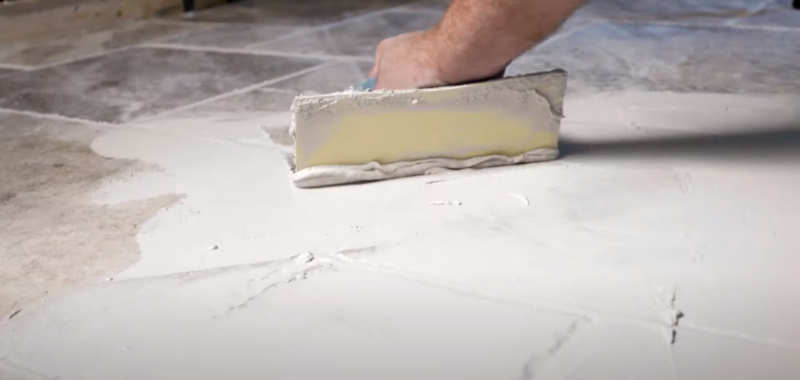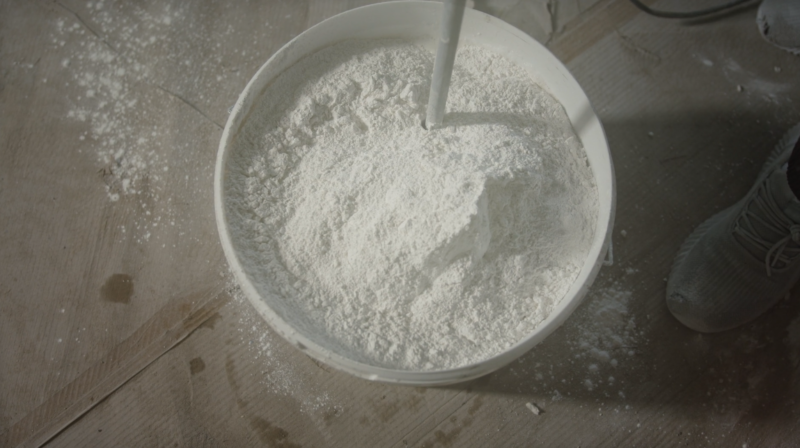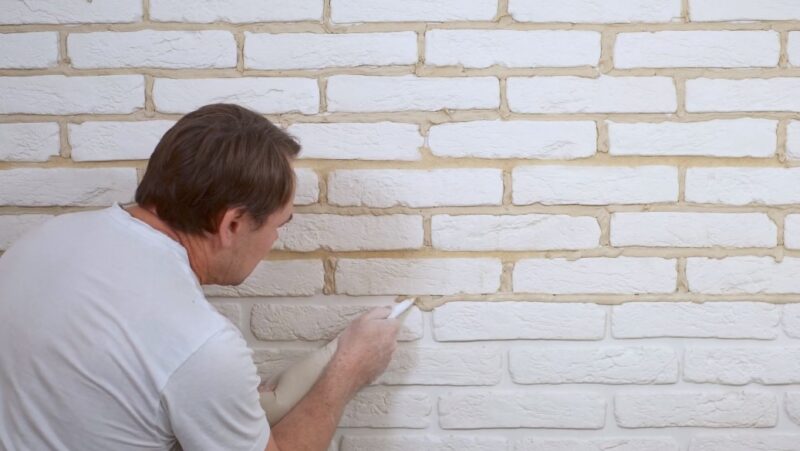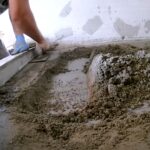When it comes to construction materials, grout and concrete are often mistaken for one another. Although they share similarities, they’re fundamentally different and used for different purposes. Let’s dive in and uncover the complexities and unique properties of each to better understand when and why to use one over the other.
Understanding Concrete
Concrete is a versatile construction material made from three main ingredients: aggregate, water, and cement. The aggregate consists of sand, gravel, or crushed stone, while cement acts as the binder that holds everything together once water is added.
Components
- Cement: This is a powdered substance made from calcium, silicon, iron, and other ingredients. When mixed with water, it forms a paste that binds the aggregate together.
- Aggregate: This refers to coarse materials like gravel, crushed stone, or sand. It’s mixed with cement and water to form concrete.
- Water: This is a crucial component that reacts with the cement, causing it to harden and solidify.
Uses
Concrete is incredibly strong in compression, making it an excellent material for heavy-duty applications, like constructing building foundations, walls, driveways, bridges, and highways. Its strength and durability make it a popular choice for large-scale construction projects.
Exploring Grout
Grout, on the other hand, is a dense fluid used to fill gaps and seal joints, such as those between tiles. It is typically composed of a mixture of water, cement, and sand, and sometimes finely ground gravel.
Components
- Cement: Like in concrete, cement in grout acts as a binding agent.
- Sand: Fine sand is often used in grout to give it a body and reduce shrinkage.
- Water: This component hydrates the cement, allowing it to harden and secure the grout in place.
Uses
Grout is generally used to fill spaces between tiles and to secure them in place on floors, walls, and countertops. It’s also used in masonry to fill voids and make structures more robust.
Grout vs. Concrete: Key Differences
While both grout and concrete include similar ingredients, the differences lie in their proportions, purpose, and performance characteristics.
- Aggregate Size: Concrete contains coarse aggregate, which makes it strong and durable. Grout, in contrast, uses very fine aggregate (often sand), providing a smoother mixture for filling gaps.
- Strength: Concrete is designed to bear loads and resist compression, while grout is not typically load-bearing. Instead, grout’s primary function is to fill gaps and create a uniform, sealed surface.
- Workability: Grout tends to be more fluid and easier to work with, especially when filling small gaps and joints. Concrete, on the other hand, is stiffer and better suited to building structures.
- Curing Time: Concrete generally takes longer to cure (harden) than grout, often needing a week or more. Grout usually cures faster, typically within 24 to 48 hours.
- Shrinkage: Grout is more prone to shrinkage than concrete due to its higher water content and finer aggregate. This characteristic can be both a pro and a con, depending on the application.
Deep Dive into Types of Grout

To further complicate matters, it’s important to note that not all grout is created equal. There are several types, each with its own unique properties and uses.
- Sanded Grout: This type is typically used for filling wider joints, usually more than 1/8-inch wide. The sand in the grout provides additional strength and prevents shrinkage, making it ideal for larger gaps.
- Unsanded Grout: For narrower joints (less than 1/8-inch wide), unsanded grout is the go-to option. It has a smoother texture, which makes it easier to work into small joints.
- Epoxy Grout: Unlike traditional cement-based grout, epoxy type is made from epoxy resins and a filler powder. This type is highly resistant to stains and water damage, making it a great choice for areas exposed to high moisture or harsh cleaning chemicals.
Deep Dive into Types of Concrete

Similarly, concrete also comes in different types, each tailored to specific applications.
- Normal Strength Concrete: This is the most common type of concrete and is made from traditional ingredients: cement, water, and aggregate. It’s used in most construction applications, including residential and commercial buildings.
- High-Strength Concrete: With a higher proportion of cement and the incorporation of additives, the high-strength kind is designed to withstand more substantial loads. It’s often used in the construction of high-rise buildings, bridges, and other large structures.
- High-Performance Concrete: This type is tailored to provide durability, ease of placement, strength, or a combination of these traits. High-performance type is used in specialized construction scenarios where unique characteristics are needed.
Also, read more about the difference between repointing and tuck-pointing.
A Closer Look at Applications
To delve further into this topic, let’s consider more specific applications and how the choice between grout and concrete might affect the outcome.
Uses in Restoration and Repair

Grout isn’t just used for sealing tile joints. It also has significant applications in the restoration and repair of old buildings and structures. Structural grouts can be used to fill voids in old masonry, secure rebars in place, or anchor equipment securely.
For example, in the restoration of historic structures, grout can be injected into cracks or voids to stabilize the building without compromising its original aesthetics. In these scenarios, understanding the properties of grout is crucial to make effective repairs without causing further damage.
Concrete in Architectural Design
While we often think of concrete as a utilitarian material, it also offers a lot of potential in architectural design. Its durability, strength, and versatility make it a popular choice for architects looking to push the boundaries of design.
One such architectural application is the use of exposed concrete – also known as architectural concrete – where the concrete is not just the structural element but also the finished surface. This technique has been used to create stunning effects in modern and contemporary architecture.
The Science Behind the Materials
To truly appreciate the differences between grout and concrete, it can be beneficial to understand the science behind these materials.
Hydration: The Key to Hardening
When water is added to both grout and concrete, it initiates a chemical reaction with the cement called hydration. This reaction causes the cement to harden and gain strength, turning the mixture from a paste or slurry into a solid material.
However, the hydration process differs between grout and concrete due to their different compositions. The higher water-to-cement ratio allows it to cure faster but can also lead to more shrinkage. In contrast, concrete has a lower water-to-cement ratio, which results in slower curing but less shrinkage and higher strength.
The Role of Admixtures
Admixtures are materials added to grout or concrete to modify their properties. They can enhance strength, decrease the time it takes to set, improve workability, or even add color.
In grout, admixtures can be used to enhance flowability, reduce shrinkage, or improve adhesion. For example, latex polymers might be added to grout used in areas exposed to high moisture to improve water resistance.
In concrete, admixtures can be used to slow down or speed up the set time, improve workability, or increase strength. For instance, in hot climates, a retarder might be used to slow down the hydration process, giving workers more time to pour and finish the concrete.
The Bottom Line
In essence, concrete and grout, while seemingly similar, have different purposes in construction. The material’s strength and durability make it ideal for building structures, while grout’s fluidity and sealing ability make it perfect for filling gaps and sealing joints.
Understanding these differences is crucial when choosing the right material for your construction project. So, the next time you find yourself in the middle of a construction project, whether it’s laying a foundation, building a wall, or tiling a bathroom, remember the key differences between these two essential materials. –







